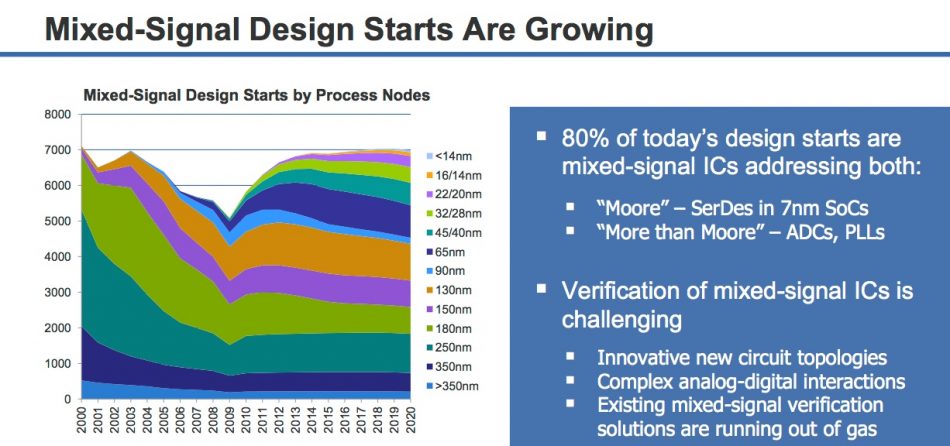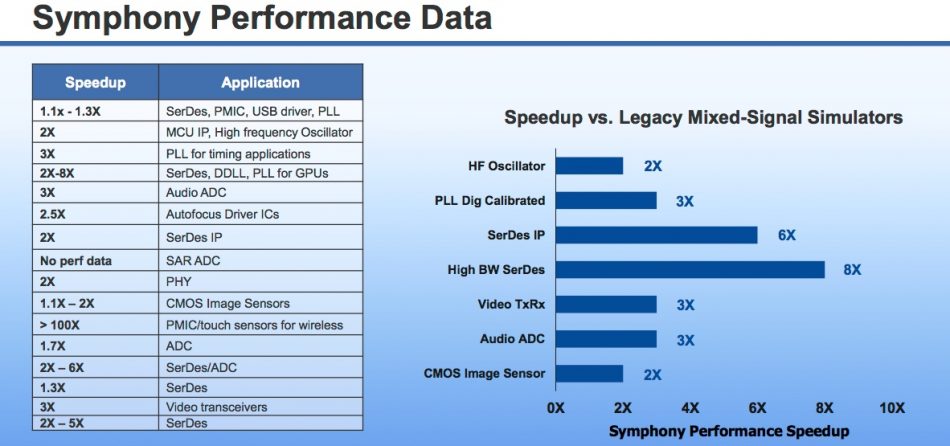Symphony raises crescendo for AMS simulation
Mentor today (November 7) publicly took the wraps off its new mixed-signal platform, Symphony, though it says that more than 30 customers have already “voted with their wallets”.
At its core, Symphony comprises a radically rethought and augmented version of the company’s Analog FastSPICE (AFS) circuit simulator and its industry-standard HDL simulators, particularly Questa.
Mentor added AFS through its acquisition of Berkeley Design Automation but, according to Sathish Balasubramanian, senior product manager at Mentor IC Verification Solutions (ICVS), it is as much the result of parent company Siemens’ determination to increase spending on EDA R&D.
Fundamental to Mentor’s Symphony pitch is the argument that Siemens’ investment here has specifically allowed it to boost AMS simulation performance, even as mixed-signal designs are increasing rapidly (Figure 1).
“We believe that our customers will enjoy a product with superior performance and usability in a space that has seen little or no investment by the EDA industry in the past decade,” said Ravi Subramanian, general manager and vice president of ICVS.
At the same time, the tool has been engineered to work within users’ existing verification infrastructure. Balasubramanian noted that this will help attract both established AMS engineers and the growing number coming new to what has historically been a highly specialized area (particularly those working for the clutch of new ‘system’ players in silicon design).
The importance of that second group is well documented across the four key areas that Symphony will target: the Internet of Things (with its low power demands), Communications (particularly for the move to higher performance 5G cellular networks, Automotive (with its needs to match growing vehicle autonomy to safety and reliability), and Data Center (where low power now sits alongside a need for every higher performance).
Mentor is claiming a typical 5X increase in productivity for Symphony, though Subramanian presented numbers that were higher for tasks related to the four key markets (summarized in Figure 2).
In concert with Symphony
The company is also some way beyond the beta stage in its deployment of Symphony. It says the tool is in active use at more than 30 companies and has already been used to realize more than 20 production-level tapeouts.
Reflecting this rate of adoption, the launch was accompanied by endorsements from several of those early customers, including Samsung, IDT, Semtech and Analog Value.
“IDT is standardizing on Symphony because our timing products require high accuracy verification for high-speed phase-locked loops that combine digital calibration blocks with analog functionality,” said Brian Buell, design director at IDT.
“[Using Symphony], we are able to efficiently run several test benches to validate the digital calibration of our phase locked loops with 3X performance improvement over our previous solution. Symphony has significantly improved our verification productivity through its intuitive set up, use model and excellent debugging capabilities”
Symphony is now available on public release.

